How to Grow Your Web Design Business with a Blog
August 11th
Andy
Offsprout is the only WordPress website builder for freelancers and agencies.
There are a lot of different marketing avenues to grow your web design business. Some are:
- In-person networking and referrals
- Online advertising
- Cold calling
- Cold emailing
- Social media
- Webinars
And then there’s blogging.
Each of these channels has different advantages and disadvantages.
For example, in-person networking can bring in new leads that are much more likely to turn into new business. These prospective clients were recommended your services. With people who are referred to you, there is already a level of trust they have in you. Compare this to getting cold-called from a random company they don’t recognize, who they would not trust.
But, in-person networking and referrals can present a limit for growth potential.
Marketing with online advertising for your web design agency means you can potentially get consistent leads that can help you scale your business. But, it also means you need an extremely solid sales process to ensure that your advertising dollars are well spent. And, you will need a budget to make it happen.
Blogging, in our experience, can be both cost-effective and scalable.
Blogging builds traffic from people who are looking specifically for the content you’ve written. If you write about “Modern web design trends for X industry”, people in that industry can find your article and get to your website.
Provided that your content is even somewhat related to the services you provide, you can build an audience.
Coming up with a Blogging Strategy – Looking at the Funnel
When it comes to blog content, there are different levels, corresponding with your sales funnel.
Think of your audience as a large funnel. At the top, at its widest, is the largest possible audience. Most people at the top of the funnel are not going to be potential clients. They may not be interested in your services at all, but many of them share common characteristics with your target audience. This is a large group, so your content will find the widest audience here. This helps you get exposure to the most people. Further down in the funnel are people looking exactly for your services. This is a smaller population, but more targeted. And at the bottom of the funnel are people deciding specifically whether to buy your services.
To simplify the funnel, we consider three stages:
- Awareness
- Consideration
- Action
The top of the funnel is the widest. At this stage, we are trying to get people aware of your brand. The target audience for “awareness” is your overall target market.
At the “awareness” level, you are not trying to sell people on your specific services. You are just trying to get them aware of your brand so eventually they can consider hiring you.
This is the broadest audience. Not everyone at this stage is going to ultimately qualify as a prospective client, but it is going to be your widest audience. This will get you much more traffic and help foster long-term relationships. Ultimately, with the top of the funnel, you are banking on many of these people end up being sales prospects or clients in the long term.
One example of top-of-funnel content would be something like, if you are targeting small businesses in Omaha, Nebraska, for example, content like “Tips for running an Omaha business.” Something broad and vague like that. The content is not necessarily even directly related to the services you provide. But, it broadly targets members of your target audience.
Below that funnel stage is a narrower audience – people who could be potential clients. For example, following the same target client of small businesses in Omaha, Nebraska, “Creating your Omaha business’s first website,” or, “How to hire an Omaha web designer.” At this stage, you are engaging with potential clients, providing them value, and suggesting to them your services.
Bottom-of-the-funnel content is content geared towards pushing qualified potential clients over the edge to end up hiring your services. Examples of bottom-of-the-funnel content would be things like case studies or portfolio items. This content is tailored specifically towards people you are actively selling.
Overall, you are going to need content covering all the different funnel stages. Mix it up.
Before you start blogging, brainstorm. Be mindful of the different funnel levels and ensure that you don’t have too much or too little content in any stage. If you only have top-of-funnel content, you will be missing out on converting your readers into clients.
But, the funnel itself is great for helping you come up with content. How about more specifics? Next, let’s review some ways to come up with blog post topics.
What to Blog About, Specifically, for Your Web Design Business
When I first started blogging, I had a ton of topic ideas. Top-of-funnel, middle, bottom, everything. I wrote comprehensively about what I thought was everything our potential clients might even be remotely interested in.
Then, at some point, I hit writer’s block.
What helped me get past it was sitting down, brainstorming, researching, and refining the ideas. For different topic ideas (that actually ended up proving successful for our blog), here are some themes to help you get started.
Top of funnel topics ideas
- Content related to your audience’s location (if you are serving a particular area) (e.g. Omaha, Nebraska)
- Content related to your target audience’s industry, broadly (e.g. restaurant owners)
- Content related to the demographics of your ideal client (e.g. family restaurant owners)
- Reviewing software and tools that people in your audience might use (e.g. restaurant management software)
- Marketing tips, broadly (e.g. logo design, social media tips)
Middle funnel topics
- Content about the web design process from beginning to end (e.g. how to come up with color scheme concepts)
- Web design specific related content
- Content about online marketing, related to web design
- Trends in web design or marketing
Bottom of funnel topics
- Case studies of your clients
- FAQs your customers have
- Portfolio pieces
- Reviews from your clients of your services
Hopefully these general areas spark some inspiration for you. Write everything down. You may come up with blog topic ideas right away. You may also just have some general notes. No idea is bad. Some ideas are just not fully formed.
Blogging Tips for Web Designers
When it comes to writing your blog posts, people often get stuck. They want every word to be perfect. It slows down the process.
But, everything does not need to be your best choice phrase.
You will need to edit your content later, so do not be so judicious with your words at first. Otherwise, it will take you forever to get your blog posts written.
Write everything first. Get all your thoughts to paper. Ignore any thoughts you might have that this content sucks or isn’t perfect.
Then, edit later.
You can end up writing 3,000 words relatively quickly; 2,000 of them can be terrible. But, you can edit out the 2,000 junk words easier after you’ve gotten everything written down. Otherwise, it could take you forever to get 1,000 words you are happy with.
You are not married to the first words you have written down.
This article you are reading now started with a lot more text, and got cut down considerably.
But, you may not be confident in your editing abilities. For that, there’s a free app.
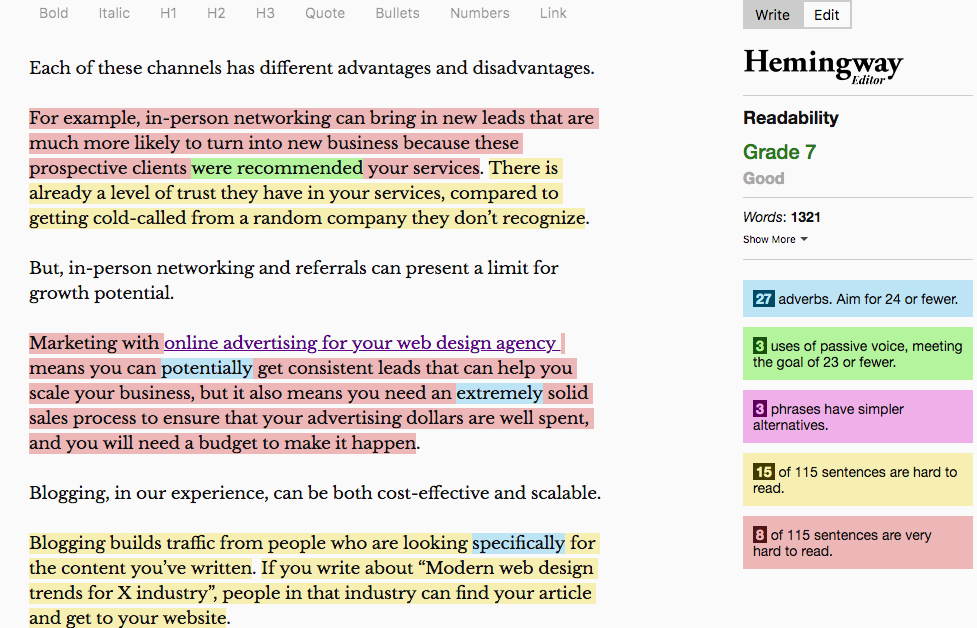
Hemingway is a writing editing tool that takes a look at your text and tells you what doesn’t read well.
Every article you write should go through Hemingway. It can help your text
Tools for Coming Up with Blog Topics
Aside from your own brainstorming, doing research also helps.
As a more advanced technique, you will want to ensure that your content writing efforts are not wasted. You don’t want to spend a week or two writing an article that ultimately gets no traffic.
Here are a few different tools you should look into for coming up with blog topics.
- Buzzsumo
- Google Trends
- Google Auto-fill
- Google Keyword Planner
Buzzsumo
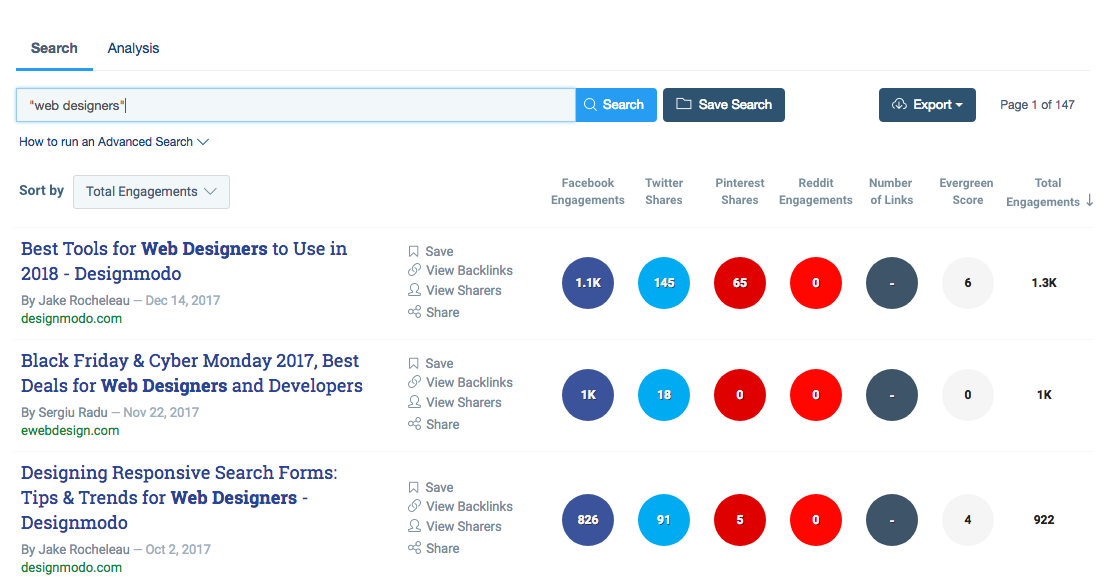
Buzzsumo helps you research the most-shared blog articles around different topics, and from different websites. For example, if you input a website, Buzzsumo will find you the most-shared articles from that site. This is great for researching competitors. You can also search for keywords, and Buzzsumo will show you the most-shared articles around your keyword.
Google Trends
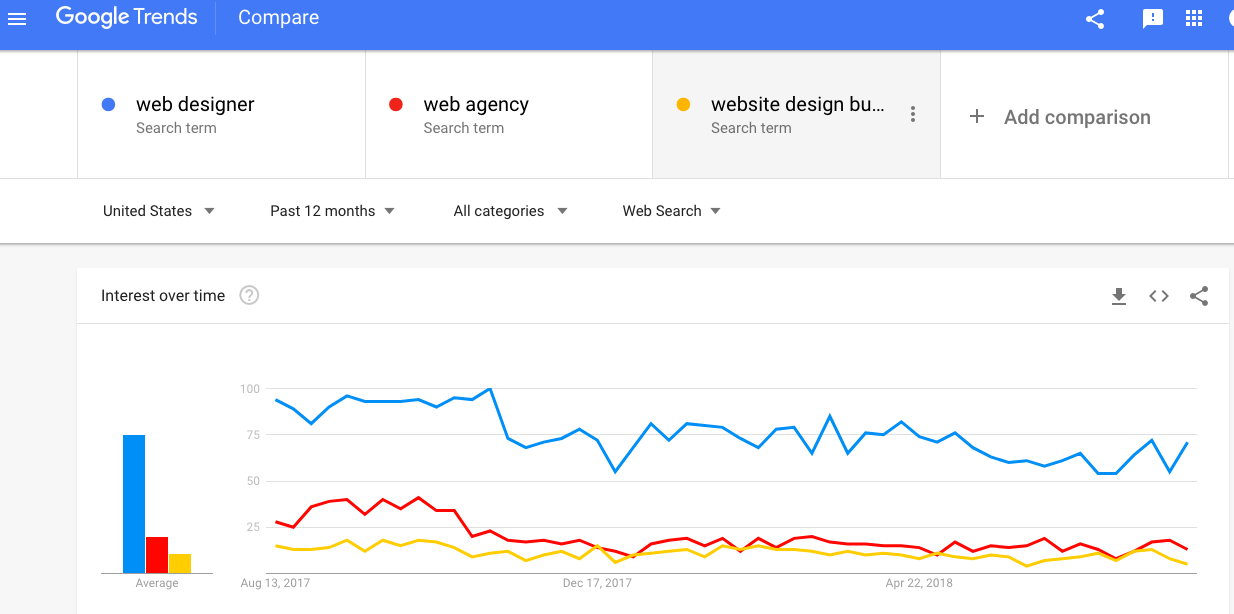
Google Trends has a few different features. First, it can show you the popularity of search keywords historically. It can even compare terms’ popularity. So for example, if you are trying to figure out whether to use “web designer” or “web agency” with your audience.
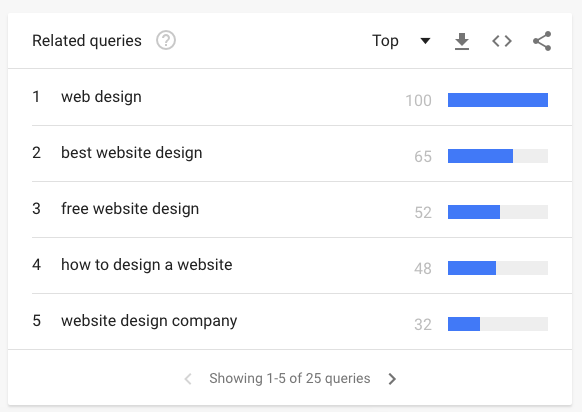
Google Trends also can give you suggestions of related search queries. This is helpful because Google can straight-up tell you what terms you should be focusing on.
Google Auto-Fill
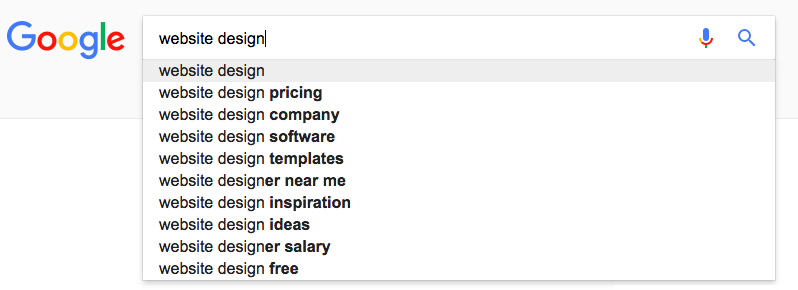
Google Auto-fill is another trick to consider. You know how when you search for something in Google, Google will give you suggestions? This is all based on Google’s data for what people are searching for. So, take the hints Google gives you, and write related to these topics. Start searches in your target industry or area, and write down what Google spits back.
Google Keyword Planner
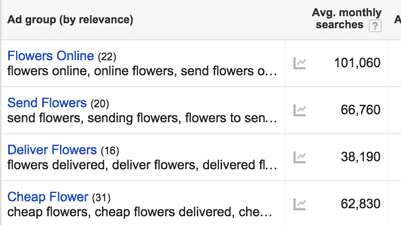
Google Keyword Planner is another Google tool to help you come up with topics. The tool is part of AdWords, but it’s helpful for your blog topics as well. Keyword Planner shows you high volume queries. Use this data to find specific topics.
Conclusion
This should get you started and get the creative juices flowing.
Blogging is a free way to help generate traffic and clients for your business.
If you have any tips or ideas for blogging to help grow your web design business, feel free to share in the comments below.
Free 14-day trial. Easy setup. Cancel any time.
get everything for only $9/month
Resources
Comparisons
Solutions
Products
Features
About Offsprout
Offsprout was founded by two former college freshman roommates. Drawing from their experience building their web design business, JurisPage, which was acquired in 2016, Offsprout is singularly focused on being the best white label website building tool for web design businesses.
